A motion sensor light switch controls the light automatically for you when the motion sensor detects people and movement. Using a motion sensor light switch can save a lot of electricity and provide a smart and green lifestyle. There are various sensor light switches on the market with different technology, functions, and specific applications. We write this guide to help you choose the best motion sensor switches for your home and offices.
Contents
- Why You Should Use a Motion Sensor Light Switch
- How Does Motion Sensor Light Switch Work
- Motion Detection Technology
- Which Technology to Choose?
- Installation Types
- How to Program Motion Sensor Switch
- Motion Sensor Light Switch Home Applications
- Commercial Grade Motion Sensor Light Switch
- Common FAQ and troubleshooting
Why You Should Use a Motion Sensor Light Switch
If you are reading this guide, you might already want or are willing to buy a motion sensor light switch. We’re all aware that using a motion sensor light switch can reduce energy waste and cut your electricity bill, but a motion sensor switch can benefit you way more than you imagine compared to a regular light switch.
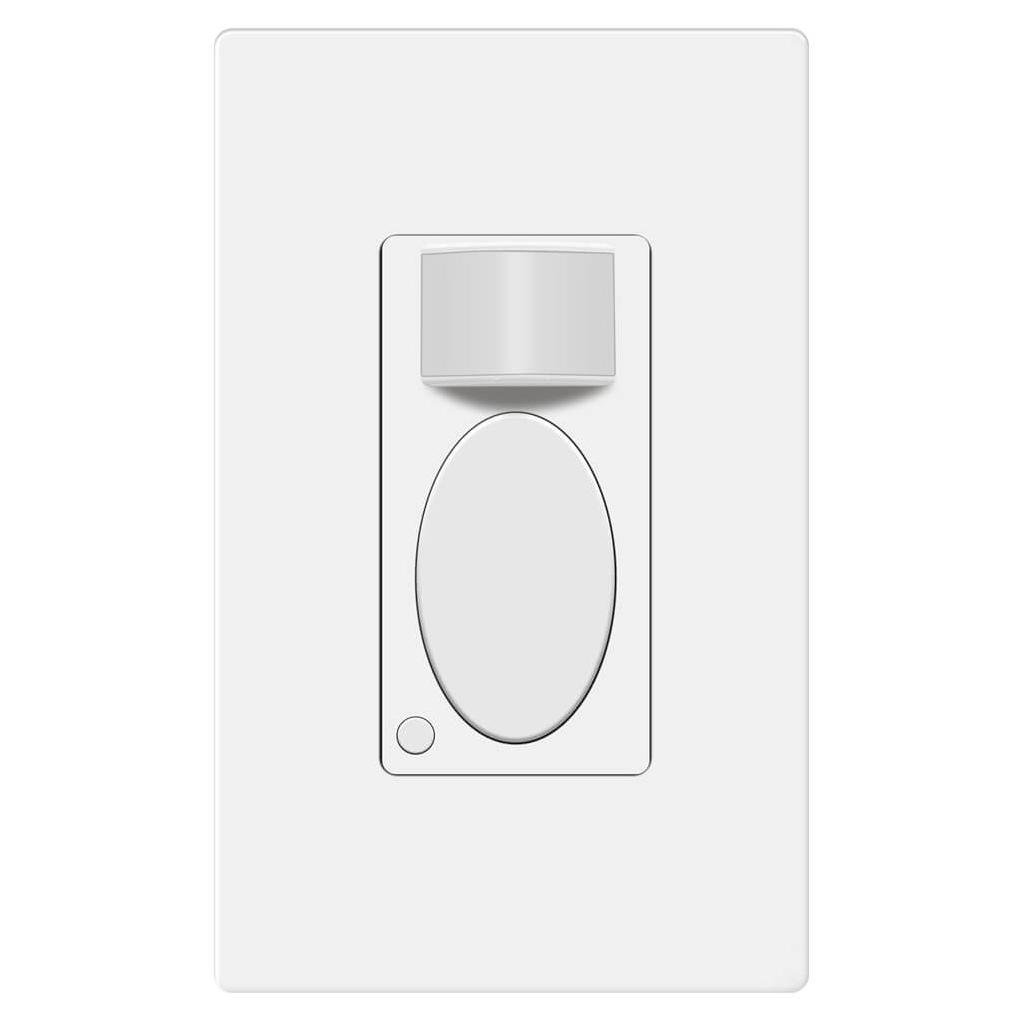
Rayzeek RZ021-5A-G
Motion Sensor Light Switch
Occupancy/Vacancy Sensor
- Exclusive Manual ON/OFF Mode
- No Neutral Required
- 110v~277v Commercial Grade
Here are some major advantages of using a sensing-based light switch.
Save Energy and Reduce Electricity Waste
It’s common sense that a motion-activated light can save more energy than a manual-operated light, but how much energy can motion sensor light switches save indeed?
According to CEE, motion sensor light switches can save up to 60% energy in-home laundry rooms.
According to the Lawrence Berkeley National Laboratory, occupancy-based strategies(occupancy sensor and vacancy sensor light switches) can produce average lighting energy savings of 24%.

According to the US Environmental Protection Agency, By using automatic shutoff, scheduled shutoff strategies like motion sensor switches, energy savings can range from 40% to 46% in classrooms, 13% to 50% in private offices, 30% to 90% in restrooms, 22% to 65% in conference rooms, 30% to 80% in corridors, and 45% to 80% in storage areas.
On average, motion sensor light switches can save 30% to 60% lighting energy in residential and commercial applications, some even up to 80% energy saving.
Longer Lifespan for LED Lights
Like all electronic products, many of us will wonder the frequent On and OFF may do more damage to the light’s lifespan rather than expand it by reducing its working hours.
Whether repeatedly turning the light on and off damages it depends on what type of light bulb you use. Frequently On&OFF results differently for incandescent and halogen bulbs, fluorescent bulbs ad LED lights.
Let’s look at the suggestions on when to turn off your lights from the U.S. Dept. of Energy:
- It is best to turn off incandescent and halogen bulbs whenever they are not needed due to their high electricity consumption.
- For a compact fluorescent bulb, a rule of thumb is to leave it on if you leave a room for 15 minutes or less (depending on several factors).
- For LED lighting, the operating life is unaffected by turning it on and off.
With these conclusions in mind, let’s dig into how these lights work in theory to understand better.
Halogen, incandescent and fluorescent lights all use tungsten filaments that heat up and emit electrons via thermionic emission.
Basically, a bi-metallic switch heats up and opens periodically, causing the magnetic field generated by the ballast to collapse and release an inductive kick into the tube. If the kick isn’t strong enough, there won’t be enough electrons to sustain the circuit through the tube and the light will flicker. The light will only sustain when the magnetic field is strong when it collapses.

The idea is that the tungsten element undergoes thermal shock every time the light is turned on. Turning on the light every time does damage the filament and will result in long-term damage.
LED light is the only type of light-emitting device out of the list that doesn’t use a tungsten element. It uses a PN junction instead, which means that the LED light requires much less voltage and current, meaning low power consumption compared to the lights with filaments. As such, LED won’t be damaged at all by switching since there is no filament to damage and the power going through the bulb is lower. In fact, many applications switch them at high speeds using PWM, which they handle with no problem.
For Halogen, incandescent and fluorescent lights, even though it shortens their lifespan every time they are turned on and off, but it’s still better than leaving the lights on 24/7. So using a motion sensor light switch can definitely help save cost and evergy in the long run.
For LED lights, their lifespan is extended with shorter working hours and the energy cost is reduced with a motion sensor switch.
For whatever type of light, applying a motion-activated light switch can do more benefits than damage, especially for LED lights.
Convenient, Clean and Hands-free
When your hands are dirty in the kitchen, wet in the bathroom or arms-full in the garage, a hands-free lighting control solution is the real problem solver. We’ve all been to similar situations where we need to go back to turn off the light when we’re not able to turn it off while leaving the room because of oily or occupied hands.

In the post-covid environment with social distancing and guidelines sch as washing your hands frequently, it’s more important than ever not to touch buttons whenever possible.
Maybe You Are Interested In
With motion sensor switches, all lighting is controlled by sensor-based switches without the need for manual operations anymore, making your life cleaner and more convenient.
Make Your Home Safer
This is an essential benefit that most people neglect when they think of motion sensor switches. We know that motion sensors are widely used in security cameras to detect burglary, but how can motion sensor light switch improve indoor home safety?
No matter how you are familiar with your home, you may never know what’s waiting for you in the dark. Without proper ample lighting, you have chances of falling, stumbling by obstacles on the floor or even falling down the stairs.
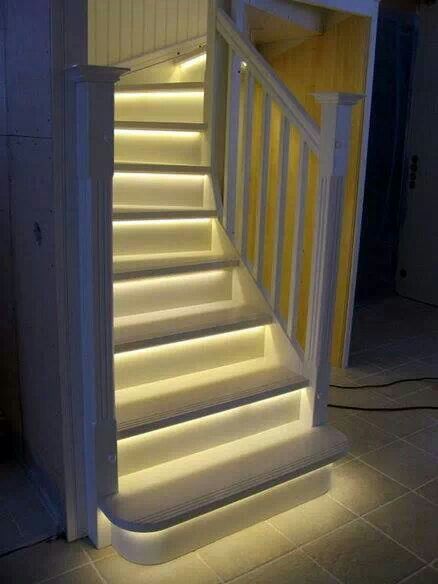
Especially when you have kids or older adults in your home, you don’t want them to risk getting hurt without ample lighting in the night.
A motion sensor light switch can turn on the light only when people are around and you don’t have to keep the lights on all night long.
There are places like your garage or home storage room, it’s dark inside even when it’s daytime. With the light controlled by sensor switches, you avoid potential risks of getting hurt from sharp or falling objects in the dark.
How Does Motion Sensor Light Switch Work
Generally, motion sensor light switches follow two working modes: occupancy mode and vacancy mode.
Occupancy mode means that the light is automatically turned on when the room is occupied by people and turned off when there are no people in the room. For example, when the sensor detects people coming in the room, the light is turned on by the sensor switch. When the sensor detects the space is empty without people or the person has left the room, the sensor switch will turn off the light. Occupancy mode motion sensor light switches are also called occupancy sensors for short.
Vacancy mode means the light can be turned on only manually by people first and the sensor switch will turn off the light when the sensor detects there are no people in the room or the people have left. Compared to occupancy sensors, vacancy sensors can prevent false-Ons and save more energy because it requires a manual operation first.
There are a variety of motion sensors light switches with only one mode that is either an occupancy sensor or a vacancy sensor. They are suitable for places with a regular daily routine, especially commercial buildings, so one fixed working mode can meet the needs and you don’t have to change modes.
All-in-one sensor light switches combine both working methods to provide max flexibility for users to select. They are called occupancy/vacancy sensors, or sometimes people would call them occupancy sensors for short.
Sometimes a manual override function is added that users can control the light switch by buttons like a regular light switch, bypassing the motion sensor detections temporally or permanently.
Light Sensor
A motion sensor with light-sensing mode can further reduce electricity waste, so the light will not turn on in the daytime when there is ample lighting and only turn on when it’s dark. Users can adjust the light sensor with certain LUX values, so the light will not get triggered if the ambient lighting is above the selected LUX.
Time Delay
Time delay is the default feature for most motion sensors, so the sensor will only turn off the light after the pre-set time delay expires when no motion is detected. Time delay keeps the light on, allowing people to leave the room temporarily.
Time delay can help prevent false-Offs, so even if the motion sensor cannot detect people in the room, it will not suddenly turn off the light.
Sensitivity
Most motion sensors allow you to adjust the sensitivity level from low to high. If the motion sensor switch turns on the light randomly or by accident, it’s most likely the sensitivity is too high you need to lower it down.
Dimmer
A motion sensor light switch with dimming function can keep the light at a comfortable level rather than simply On or Off. A regular sensor light switch can only turn on or off the light, making the room too light or too dark if the light bulb is not appropriate. With a dimming feature, the ambient light can keep to a moderate level without sudden changes.
Motion Detection Technology
Typically, a motion sensor light switch is a light switch controlled by a built-in motion sensor unit. When the motion sensor detects a movement, then the light switch will activate or deactivate the light.
The motion sensors may use different motion-detecting technology to detect people or movement and each technology has its unique advantages and disadvantages. Normally, three kinds of technology are used in motion sensors for detection: PIR, ultrasonic, and Dual-Tech technology.
Before going further, I think we’ll agree there are no perfect motion sensors, and they may make mistakes.
When the motion sensor detects unwanted motion then it falsely turns on the light, this type of behavior is called False-On. For example, when the room is empty, but the sensor detects people moving from outside, and it turns on the light, it’s a waste of energy that should be avoided.
When the motion sensor is unable to detect people in the area, then it may falsely turn off the light, this type of behavior is called False-Off. For example, when we are still reading books in the room, but the sensor does not detect our movement as we are very quiet with small motions, then the sensor may turn off the lighting, thinking the room is already empty.
Flase-Ons and false-Offs should all be prevented to provide better performances, and each technology can cause false-ons and false-offs for different reasons.
PIR Motion Sensor Light Switch
A PIR motion sensor light switch uses passive infrared technology for motion detection.
The PIR motion sensor passively receives and detects radiation emitted or reflected by moving objects or people. PIR sensor has two slots to receive infrared from two locations at the same time, and if there is a change between the received heat from the two slots, then the sensor knows there is a moving object and turns on the light.
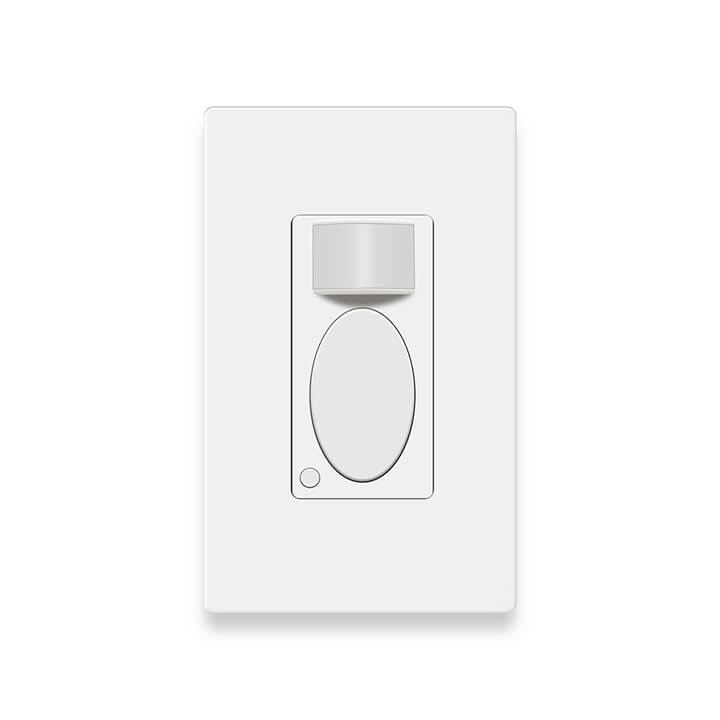
Since PIR motion sensors detect motion by heat changes, they can also get triggered by other heat sources, like dogs and cats other than human. PIR motion sensors also require a clear sight of view of the detection area as they need to receive the emitted IR, so there should be no obstacles blocking the sensor’s view.
PIR motion sensors consume very little energy and are very suitable for home usage as they don’t need to send out signals for detection.
Get Inspired by Rayzeek Motion Sensor Portfolios.
Doesn't find what you want? Don't worry. There are always alternate ways to solve your problems. Maybe one of our portfolios can help.
For PIR sensors to have a more accurate sensitivity, their heat detection range is often limited to near human heat range so that they will trigger fewer false-ons to other heat sources.
Ultrasonic Motion Sensor Light Switch
An ultrasonic motion sensor light switch uses ultrasonic technology to detect where there is moving objects or people. The ultrasonic motion sensor continuously sends out ultrasonic singles, then the sound waves will hit objects and reflect, and if there is a difference between the sent wave and received wave, then the sensor knows there is movement.
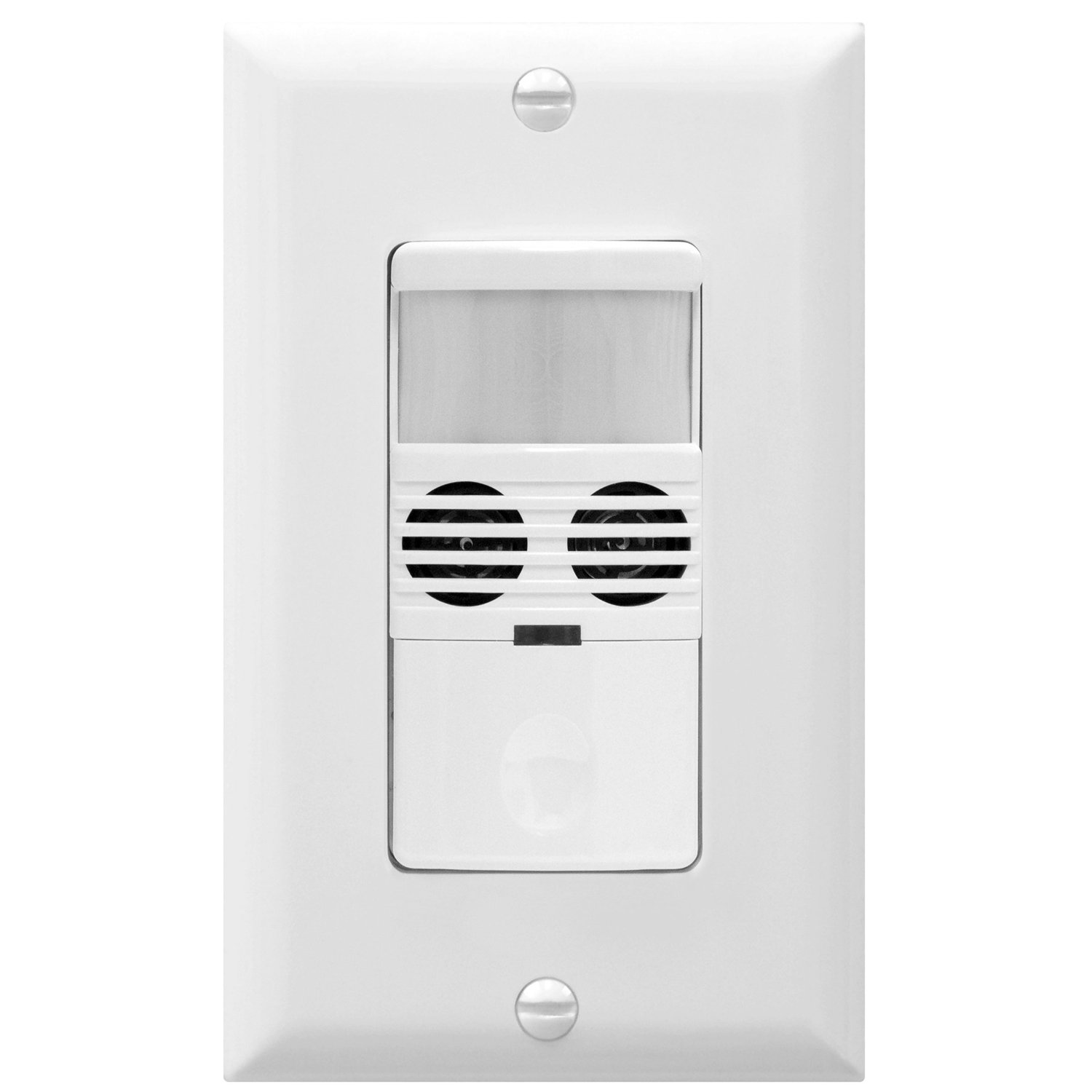
Ultrasonic motion sensors detect motion only by sounds, so they cannot tell whether it’s a motion from people or moving objects. Any movement in the given area may cause the ultrasonic sensor to turn on the light, which makes the sensor react not only to human actions.
Ultrasonic can also pass around corners and obstacles as they don’t require a view of sights like PIR sensors, so ultrasonic sensors are widely used where the room is with multiple stalls and walls.
Ultrasonic sensors are often highly sensitive even though they can be adjusted to low to high sensitivity. And they will consume much more energy than PIR motion sensors because they need to send out sound waves constantly which makes it not the optimal option for home applications.
Dual-Tech Motion Sensor Light Switch
A dual-tech motion sensor light switch uses both PIR and ultrasonic technology combined for better performance.
The dual-tech sensor will only activate the light when both technologies detect motion simultaneously, and as long as either technology is still detecting motion, the light is still kept on.
To Turn On the Light
We know ultrasonic sensors consume a lot of power, so the ultrasonic sensor is on standby mode and only gets activated to detect motion after a motion is already detected by the PIR sensor first.
If both PIR and ultrasonic sensors detect the same motion, the dual-tech sensor will turn on the light. In this way, a dual-tech sensor can save energy because the ultrasonic sensor does not have to constantly send out sound waves. And it can prevent false-ons as the motion must be registered and recognized by both two sensors.
To Turn Off the Light
As long as either PIR or ultrasonic sensor is still detecting motion, then the dual-tech sensor will consider there are still people and keep the light on to prevent false-offs.
Apparently, dual-tech motion sensors have combined the advantages of both technologies but without the disadvantage of either motion-sensing tech.
Which Technology to Choose?
PIR motion sensor light switchers are best for both home and commercial usage for the following reasons:
- PIR motion sensors consume very little energy as they only passively receive infrared
- PIR motion sensors are very durable and cheap
- PIR sensors detect motion by heat so they will react more precisely to human actions
Ultrasonic and dual-tech sensors are more suitable for open spaces and commercial buildings:
- They are very sensitive and can detect fine motions
- They can detect around obstacles corners which makes them suitable for complex open spaces
Installation Types
Motion sensor switches are also sorted by how and where they are installed, here are all the popular types on the market.
Neutral Required and Ground Wire Required
In most cases, there are four wires in your wall box, a load wire, a line wire, a neutral wire and a ground wire. You need to use a neutral wire required motion sensor light switch.
A neutral required light switch is also the standard motion sensor light switch, meaning it needs a neutral wire to work.
In some older houses, you may not find a neutral wire in your wall box, so there are only three wires: a load wire, a line wire, and a ground wire. In this case, you will need to use a motion sensor switch that does not require a neutral to work, this type of switch is labeled “No Neutral Required” or “Ground Wire Required” because it needs the ground wire to work at least.
In either case, you need a ground wire for the motion sensor light switch to work. There is no motion sensor light switch that can work without a ground wire.
Wall and Ceiling Mount Switch
Although they are all motion sensor light switches, they look entirely different.
The wall mount sensor switches look like light switches combined with a motion sensor. They are also called in-wall, wall mount or just sensor wall switches.
The ceiling mount motion switch is more of a motion sensor than a light switch, and they are installed on the ceiling that controls the lights directly. So they are often called ceiling motion sensors or ceiling occupancy sensors.
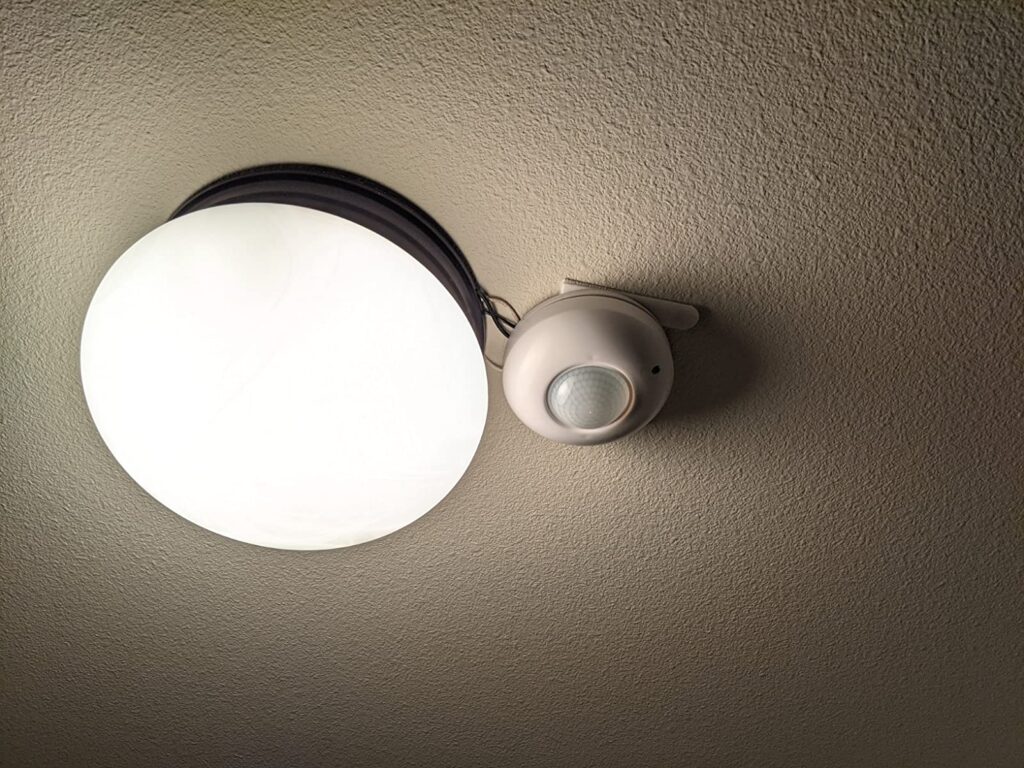
Ceiling mount motion sensor does everything automatically. The setting such as time delay, sensitivity are all on the sensors, usually people adjust the sensor for one time only and will never change it again as they are located high on the ceiling.
If you want to have manual control of the ceiling motion sensor, you need to add one more wall switch connected to the light and sensor or use a remote or wife ceiling sensor.
Indoor and Outdoor
Most motion sensor light switches are for indoor usage that cannot be used directly outdoors as they are not made to resist hard weather or anti-rust. Another reason is that there are many noise sources like birds, moving cars that will falsely trigger the motion sensor.
For outdoor usage, we will generally use motion detectors to control the lights. You can find more information on our motion sensor guide here.
3-Way Light Switch
A 3-way light switch allows you to control the same lighting from two different locations. While standard motion sensor light switches are only able to control one light.
If you have a long hallway that a single motion sensor cannot cover, you may want to install two sensors at each end. In this case, you will need two 3-way motion sensor light switches installed at both ends.
Remote Wireless and Wifi
Wireless sensor light switches are growing in popularity, especially for upgrading existing lighting control systems. They are easy and quick to install without the worry of messing with existing wires or adding new wires. Wireless sensors are often remotely controlled through wifi. Wireless sensors are powered by an internal battery and send motion singles wirelessly to the controller to turn ON/OFF the light.
How to Program Motion Sensor Switch
Most wall sensor switches are programed on the switches. Some smart switches can be programmed over your phone app.
For older sensor wall switches, you need to uncover the plate and change functions there. Usually, there are toggles to select functions and small dials to change time delay etc.
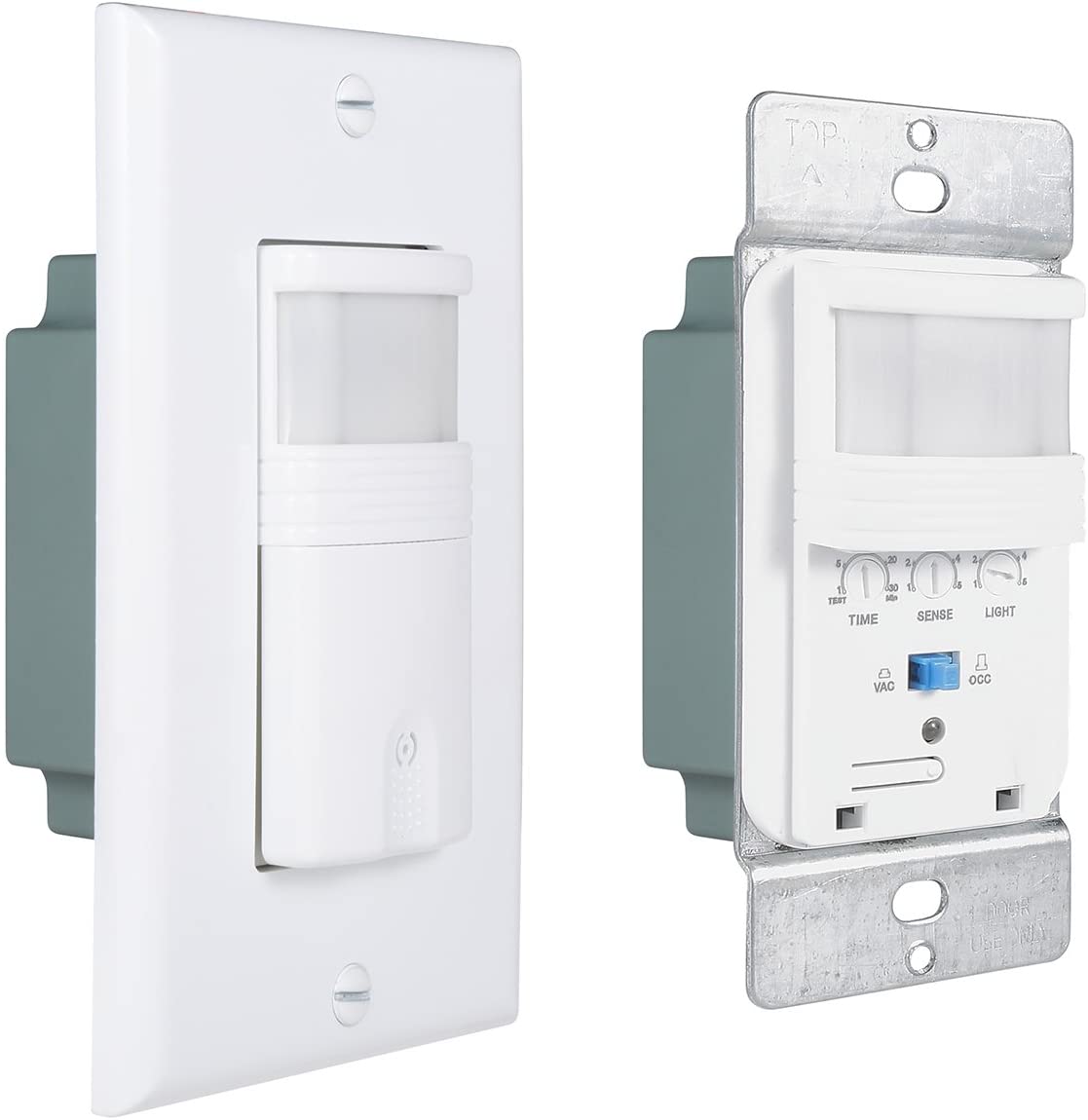
For newer type wall switches, you can program the sensors by pressing buttons. By short press or long press buttons, you can adjust the mode directly which makes the cover thinner and look better.
Ceiling mount sensors are similar to old type wall switches, and you need to change the operating mode on the sensor. After removing the cover, you will find similar toggles and dials for further altering.
All above are for reference, especially if your sensor is programmed by buttons. Follow your motion sensor light switch’s instructions for detailed information.
Looking For Motion-Activated Energy-Saving Solutions?
Contact us for complete PIR motion sensors, motion-activated energy-saving products, motion sensor switches, and Occupancy/Vacancy commercial solutions.
Motion Sensor Light Switch Home Applications
If you want to use motion sensor light switches at home but don’t know where is the most appropriate places to use them. Here are some home application recommendations.
Bathroom
The bathroom is one of the best places in your home for motion sensor light switches. In fact, we’d suggest every reader install a motion sensor light switch at least in your bathroom.
People would frequently need to use the bathroom at night, with a motion sensor switch, the light will turn on for you for convenience and safety.
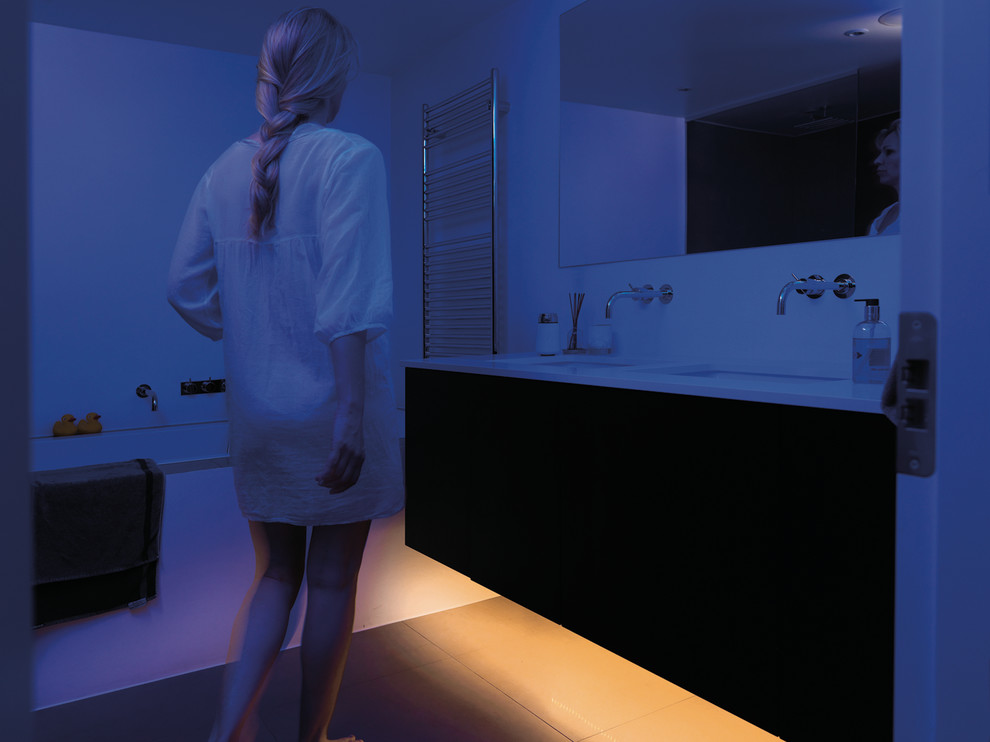
Another benefit is after taking a shower or washing your hands, you don’t have to risk getting an electric shock touching the light switch with wet hands.
If you have trouble with the motion sensors in your bathroom, look at our detailed guide here for solutions.
Garage and Storage Room
Home garage and storage room are nice places for a motion sensor light because they usually lack of natural light and we need to move things in and out of these places quite often.
A ceiling mount motion sensor is appropriate for this place as they can have better coverage than wall switches and there are many obstacles like shelves and boxes in these rooms.
Kids Bedroom
Kids like to play around the house and often forget to turn the light off. Parents can install a vacancy sensor wall switch in the kid’s bedroom.
Vacancy sensor will keep the light off all night and never turn on the light accidentally during a good sleep.
Fan Control
You can add a motion sensor switch to ceiling fans in the room or exhausting fans in the bathroom.
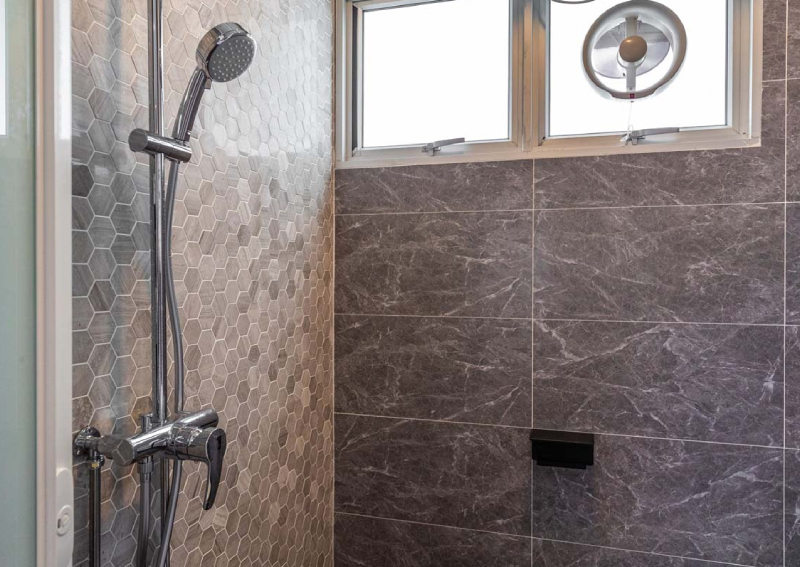
For ceiling fans, you can add an individual motion sensor switch to control the fan only.
For bathroom or kitchen exhaust fans, you can choose to use a motion switch light switch with fan control, so you only need one switch to control them both.
Commercial Grade Motion Sensor Light Switch
Applying an occupancy-based motion sensor lighting system can save more energy and reduce electricity waste in commercial buildings.
There are many energy codes for lighting systems for commercial buildings, whether it’s general code like ASHRAE, IECC or local code like California’s Title 24, it’s required to have lighting saving systems such as occupancy and vacancy light switches.
ASHRAE and IECC require automatic shutoff for indoor lighting systems in commercial buildings with a size larger than 5,000 square feet. For a large space with a predictable rate of occupancy, such as the working hour of the whole floor in the building, scheduled automatic shutoff is the way to go.
Motion sensor light switches are the ideal automatic lighting shutoff solution for enclosed, localized places where they can provide a distributed control such as private offices, restrooms, lunchrooms, break rooms, meeting rooms, etc.
ASHRAE and IECC both require lighting control in enclosed spaces so we can install motion sensor light switches so that both automatic shutoff and space control requirements are met.
There are a few differences when choosing commercial grade sensor light switches.
277 voltage
The most significant difference between home and commercial light switches is the voltage. In the U.S., the home voltage is 110V and the commercial voltage is 277V.
You need to choose a light switch that is compatible with your voltage.
Working Mode
Single-mode occupancy and vacancy sensor are preferred in commercial buildings as the daily working routine are usually fixed. Someplace are good for occupancy mode, some are suitable for a vacancy sensor.
You can install an all-in-one motion sensor light switch, but it’s highly possible that you will never change the motion detection mode for the entire year.
Technology
Both PIR and dual-tech sensors are widely used in commercial buildings. PIR light switches are more durable and cost-effective. Dual-tech light switches are more suitable for open spaces.
Common FAQ and troubleshooting
How to Turn Off Motion Sensor Light
Sometimes you want to turn off the light while you are still in the room. If it’s a sensor wall switch, then you can press the button on the sensor, most of the time the manual mode is enabled so you can turn off the light temporarily.
If it’s a ceiling motion sensor and there is no light switch on the wall connected to the ceiling sensor, you cannot turn it off because it’s fully automatic.
How to Keep Motion Sensor Light On
For some circumstances, you might want to keep the light on despite motions. Read our detailed guide on how to keep the motion sensor light on here.
How to Bypass/Override Motion Sensor
For some sensor wall switches with a button, you can press the button to manually deactivate the motion sensor for a short time.
How to Deactivate Motion Sensor
Some motion sensors switch provide a manual mode, which allows you to disable the motion detection feature and use it like a regular light switch.
How to Reset Motion Sensor Light Switch
Follow the user manual of the light switch to reset it first. If it’s not working, try quickly turning it on and off several times for two or three seconds.
Motion Sensor Light Switch Turns On Randomly
It’s usually because the sensor detects unwanted motions.
You can try to lower the sensor’s sensitivity. If it’s a PIR sensor, you can block part of the sensor’s lens.
Make sure the motion sensor is not distracted from noise sources and try relocate the sensors to make sure the sensor can only detect within the room not outside.
Motion Sensor Light Switch Not Turning Off
Try a small time delay first to see if the sensor can turn off, sometimes the time delay is set too long so it seems the light won’t turn off.
If it still does not turn off, try the methods mentioned above. It’s most likely the sensor detects motion from other sources.




















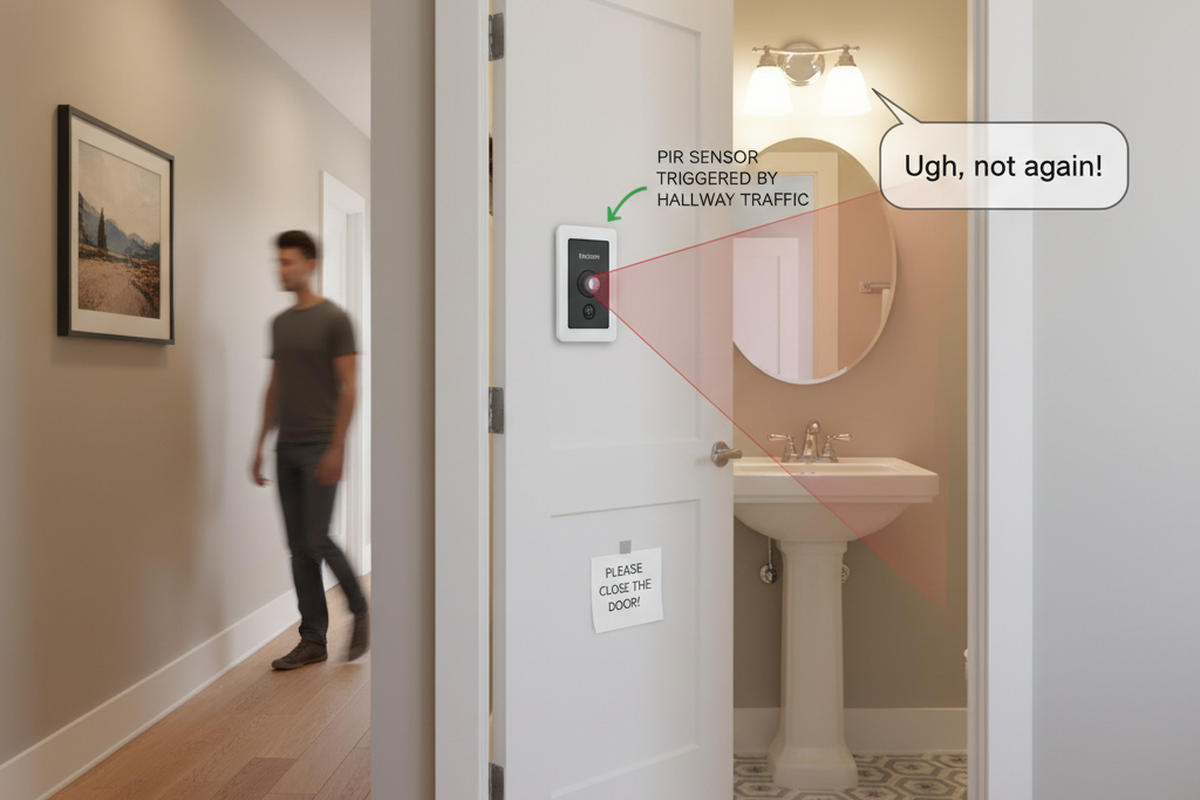
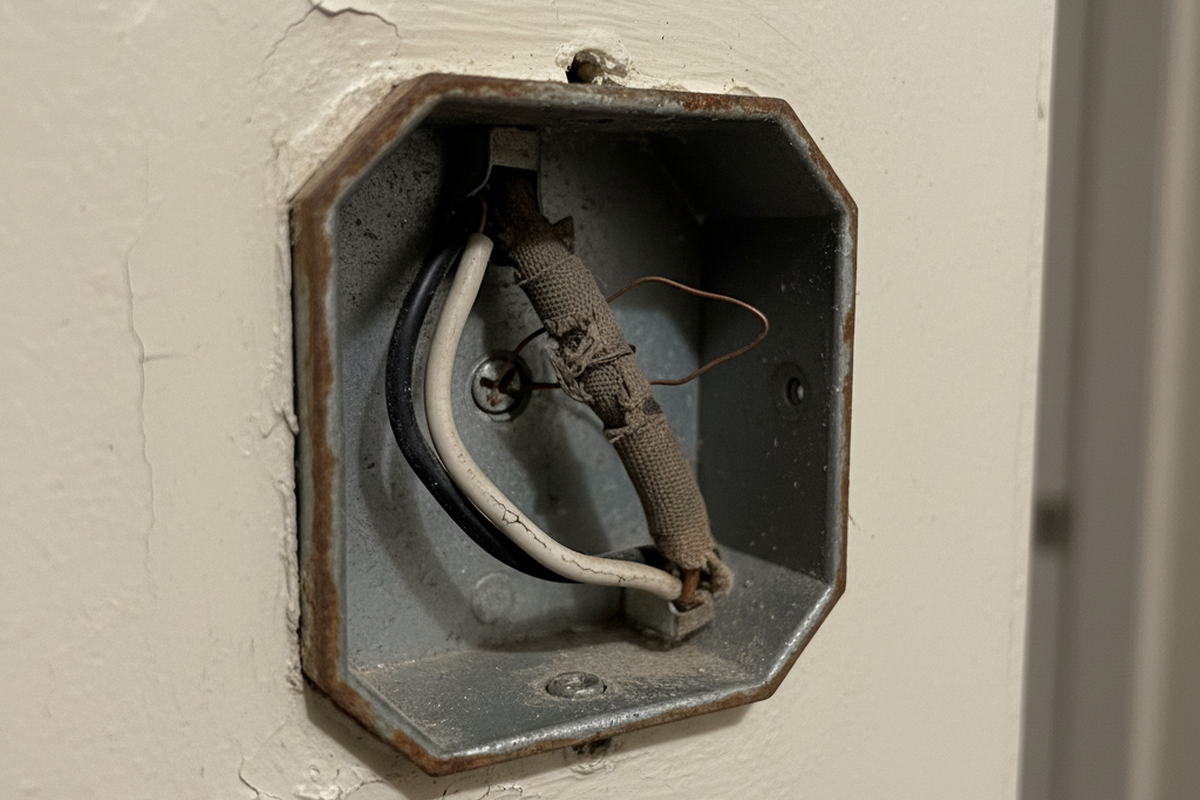
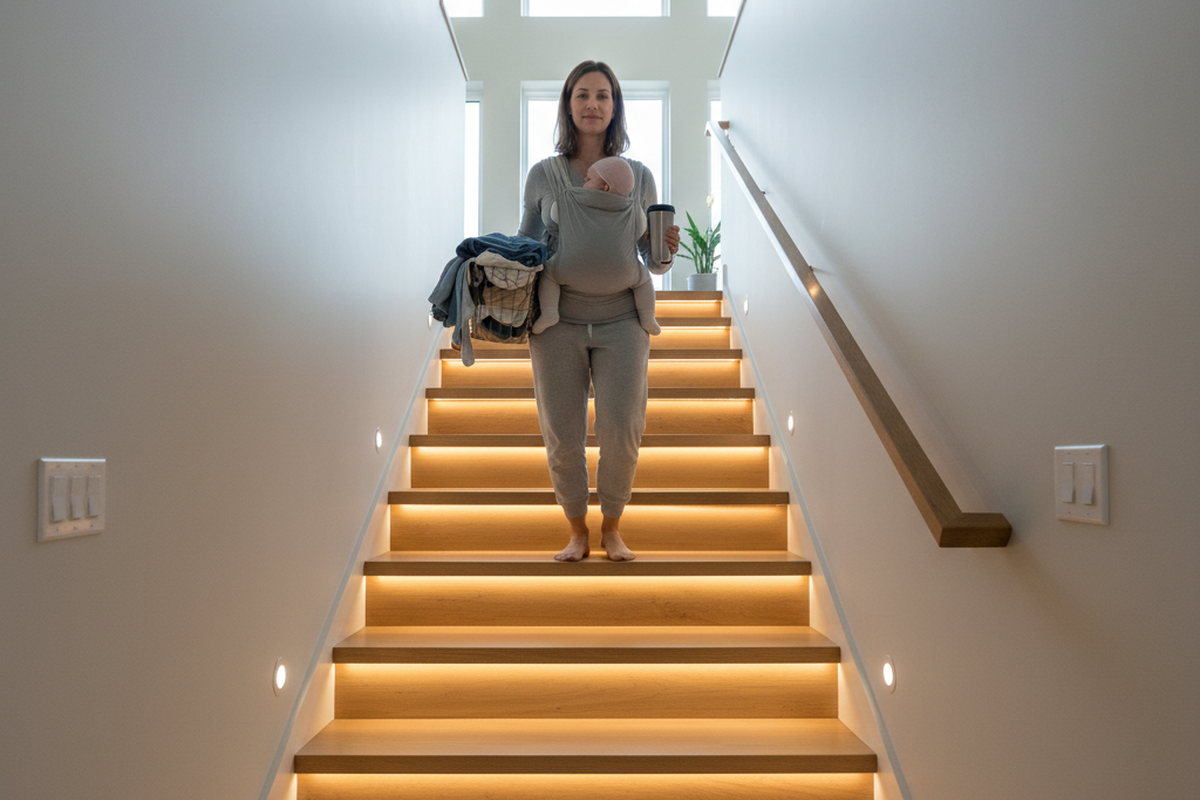
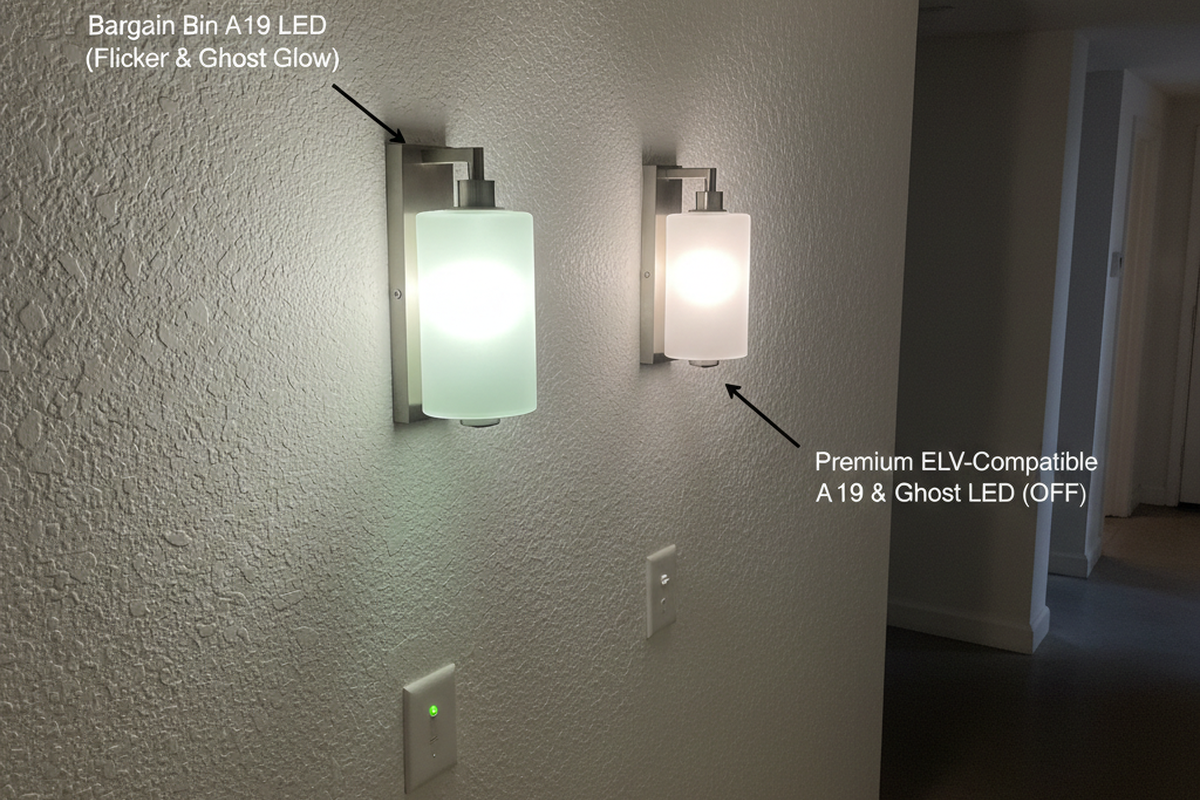

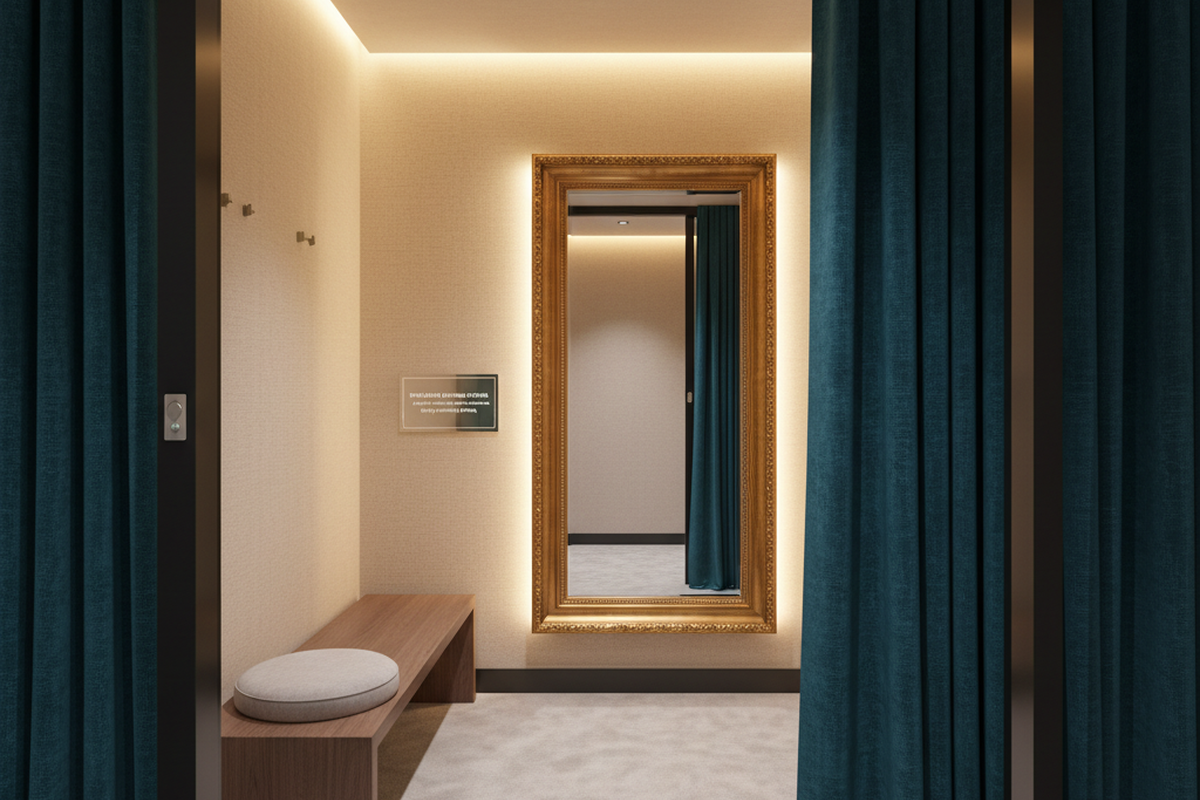

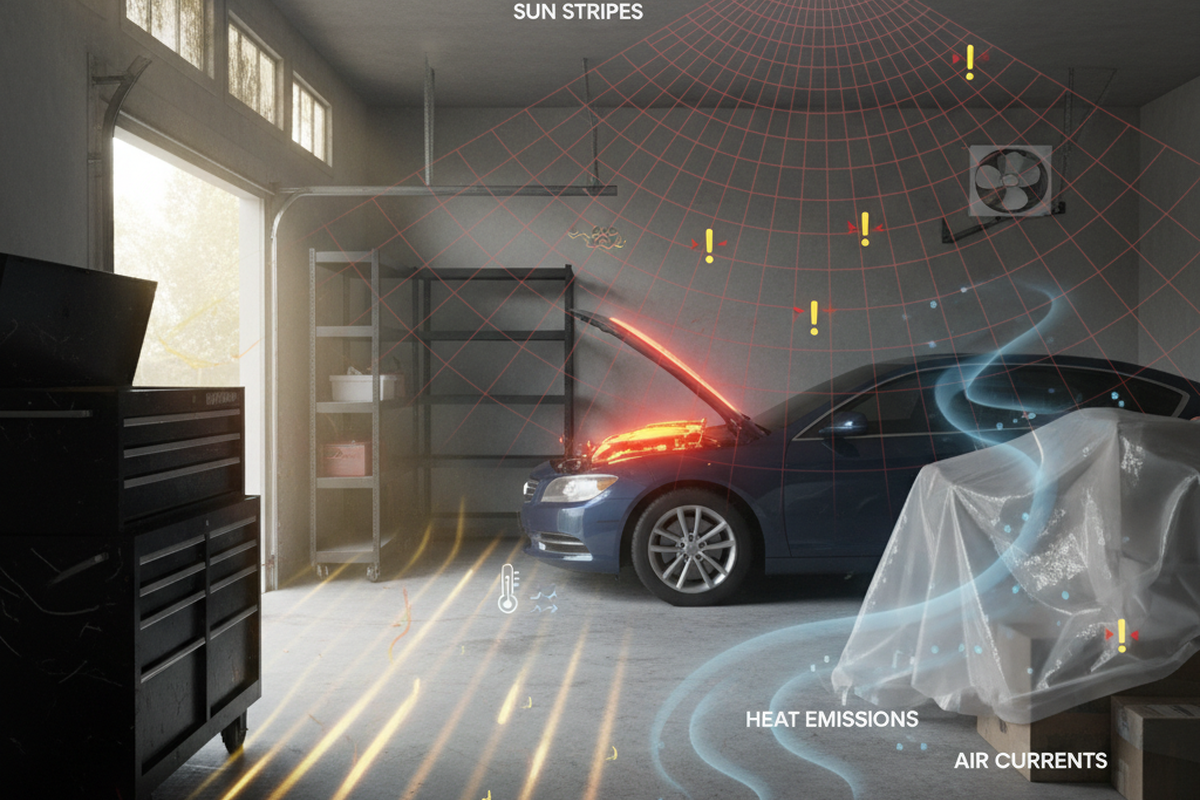
Do these switches fit in the same space as a regular switch, ie triple wall switches?
Hi Marilyn,
Yes. It can fit in all 1-gang wall boxes and replace regular switches. If the triple switches you mean are 1-gang size with 3 rockers, it fits. If the triple switches are 3-gang size with a big cover, it can also fit in one of the three gangs without cover.